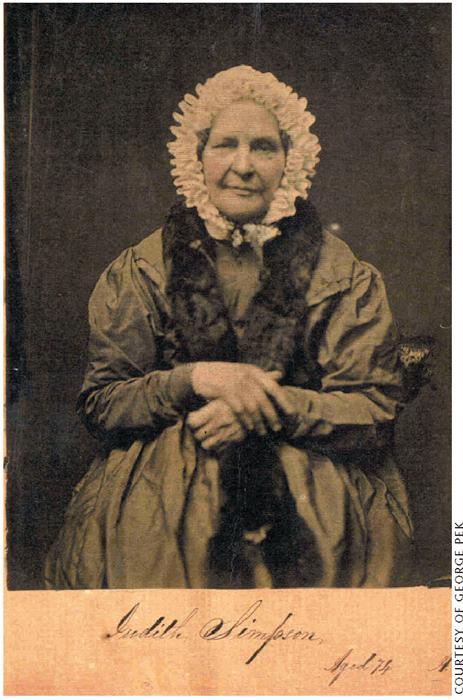Sign up for the Family Tree Newsletter Plus, you’ll receive our 10 Essential Genealogy Research Forms PDF as a special thank you!
Get Your Free Genealogy Forms
"*" indicates required fields

I love a good photo mystery, and this picture was a real stumper. It offers a rare look at an early photographic method. I haven’t been able to answer all of Pek’s (or my own) questions about the portrait, but here’s a start.
Salt of the earth
Around the time that Louis Daguerre developed his images on metal in 1839, an English inventor, William Fox Talbot, found a way to produce paper prints. His creations, which he called “photogenic drawings,” laid the foundation for modern photography.
Paper prints didn’t gain popularity in the United States until the 1850s, when card photographs — essentially, images mounted on heavy cardstock or cardboard — debuted. But the English, French and Canadians purchased “salted” paper prints well before that time. These images were rare stateside.
Salted prints, which date from 1840 to about 1860, consisted of a sheet of rag-based paper (think of fine writing paper), sodium chloride (table salt) and silver nitrate. Those made from paper negatives were known as calotypes. Historians refer to prints made from glass negatives simply as salted paper prints. To learn more about these photographs, see James M. Reilly’s The Albumen & Salted Paper Book: The History and Practice of Photographic Printing, 1840-1895 (Light Impressions), which you can read for free on the Web at <albumen.stanford.edu/library/monographs/reilly>.
Four years ago, Pek purchased an 1851 indenture from Hamilton, Ontario, Canada, that had been printed by “Henry Rowsell, Printer, Bookseller, and Stationer” of Toronto and contained a watermark of three fleur-delis on top of a crown. To his surprise, this watermark matched the one on the photograph of Simpson.
I checked with the staff at Library and Archives Canada <www.collectionscanada.ca>, who told me that Rowsell worked from 1834 to 1880. It’s probably just a coincidence that both the indenture and the portrait bear the same mark. The photographer must have used the good-quality paper Rowsell sold.
This picture is likely a salted paper print, not a calotype, for two reasons. Calotypes are not as sharp and detailed as this portrait. And a photo archivist at Library and Archives Canada didn’t know of any Canadian calotypes dating from the 1840s.
What, this old thing?
While sorting out the various clues in this picture, I kept returning to Simpson’s clothing. Her appearance reminded me of characters in Charles Dickens novels, not the women I usually see in early daguerreotypes. In the 1840s, women typically wore dresses with tight sleeves and bodices, but this woman’s dress has full sleeves and looks more like 1890s styles. The handwriting and date seemed authentic, so dating her costume was a dilemma.
Rather than focusing on the dress, I attempted to date her day cap — the indoor bonnet she’s wearing. I referred to Susan Langley’s Vintage Hats and Bonnets, 1770-1970 (Collector Books), but couldn’t find any 1840s styles that even remotely resembled Simpson’s day cap. When I turned to the color 1830s fashion plates, however, I saw several dresses with full sleeves and dropped shoulders. Simpson must have been wearing her decade-old best dress.
Canadian connections
I’ve spent so much time staring at this photograph I feel as if Simpson’s a member of my own family. If she truly was 74 in 1848, she was born around 1774. I searched databases at Ancestry.com <Ancestry.com > and FamilySearch <www.familysearch.org> to learn additional details about her life, but couldn’t find any matches.
Pek did locate a land record mentioning a Judith Simpson who lived in Drummond, Quebec, Canada, in 1807, and he hopes she’s the same person. Another researcher thought Simpson might have come from a Loyalist family in the United States, since many Loyalists moved to Canada during and right after the Revolutionary War.
ADVERTISEMENT




